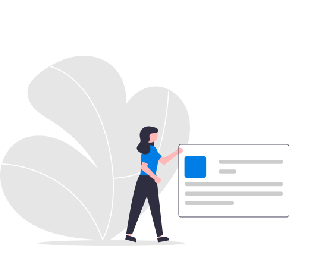What Does Digital Employee Experience Mean in the Workplace?
Simply put, Digital Employee Experience is the sum of all digital interactions an employee has with workplace technology. It includes everything from onboarding tools and HR portals to communication apps and project management systems.
Imagine starting your workday: checking messages on Slack, attending a Zoom meeting, submitting attendance on Qandle, and tracking performance on a dashboard. Each touchpoint contributes to your digital work experience.
For HR leaders, creating a great DEX means ensuring these touchpoints are smooth, intuitive, and efficient. Employees shouldn't feel frustrated by clunky software or scattered systems. Instead, the goal is to make technology feel invisible yet empowering, helping people do their best work without tech barriers.
In HR terms, Digital Employee Experience is not just about tech adoption; it's about creating a digital environment that enhances well-being, engagement, and efficiency.
TL;DR - Summary!
- Digital Employee Experience (DEX) refers to how employees interact with digital tools and systems at work.
- A strong DEX improves employee engagement, productivity, and retention.
- To enhance DEX, HRs can focus on feedback, automation, user-friendly HRMS tools, and seamless tech integration.
- It's especially vital for hybrid and remote teams to stay connected and efficient.
- Using modern tools like HRMS software, collaboration apps, and digital learning platforms can transform DEX.
How Can You Improve Digital Employee Experience Effectively?
Improving DEX doesn't mean implementing more tools, it's about using the right tools in the right way. Here's how HRs and organizations can do it effectively:
1. Simplify Workflows
Reduce unnecessary complexity. Use HRMS software that combines multiple HR functions like attendance, payroll, and performance management in one place. This saves employees from juggling multiple systems.
2. Gather Employee Feedback
Just like you collect feedback for customer experience, do the same for employees. Ask questions like:
- Are the tools easy to use?
- Do they make work faster or harder?
Listening to employees helps HR teams spot tech pain points early.
3. Prioritize Onboarding and Training
Even the best tools fail if employees don't know how to use them. Provide digital onboarding sessions, short tutorials, or 'how-to' guides that make tech adoption effortless.
4. Enable Automation
Automation reduces repetitive tasks, think of automated leave approvals, expense claims, or performance reminders. It not only saves time but also boosts employee satisfaction by simplifying day-to-day tasks.
5. Ensure Cross-Platform Integration
A truly strong Digital Employee Experience allows employees to move from one platform to another without disruption. Integrating HR, communication, and productivity tools ensures a seamless flow of data and work.
By focusing on these areas, HR teams can transform technology from being a frustration point to a productivity booster
Why Is Digital Employee Experience Crucial for Hybrid and Remote Teams?
As workplaces shift to hybrid and remote work models, maintaining connection, engagement, and culture has become a challenge. That's where Digital Employee Experience becomes the glue holding distributed teams together.
Here's why it's so crucial:
Bridges Physical Gaps
DEX ensures that employees feel connected even when working miles apart. Tools like video conferencing, chat apps, and digital HR platforms make collaboration easy.
Boosts Productivity
Smooth workflows and efficient software reduce downtime and confusion, keeping remote employees focused.
Supports Mental Well-Being
A positive DEX minimizes frustration from tech issues, helping employees maintain balance and avoid burnout.
Encourages Transparency
With the right tools, employees can access information like policies, payroll, or performance metrics, anytime, anywhere. This builds trust and accountability.
Drives Retention
A strong digital environment signals that your company values employee convenience and growth, making people more likely to stay.
For hybrid setups, DEX isn't just a tech upgrade, it's an employee engagement strategy in disguise.
Key Tools That Enhance Digital Employee Experience
Technology is the backbone of DEX. But which tools make the biggest difference? Let's look at a few game-changers every HR should know:
1. HRMS Software (like Qandle)
A comprehensive Human Resource Management System streamlines everything from payroll to performance tracking. It centralizes data and improves accessibility for both HR and employees.
2. Collaboration Platforms
Tools like Slack, Microsoft Teams, or Google Workspace help employees stay connected, share updates, and collaborate seamlessly, no matter where they're located.
3. Digital Onboarding Tools
New hires form their first impressions digitally. Platforms that offer paperless onboarding, digital document signing, and e-learning modules make the experience smoother and faster.
4. Employee Engagement Tools
Use feedback and recognition software to keep morale high. Regular pulse surveys, virtual celebrations, and gamified recognition platforms enhance engagement.
5. Performance Management Systems
Tracking goals and achievements becomes easy with real-time dashboards. Employees get clarity on their progress, and managers can provide timely feedback.
6. Wellness and Learning Platforms
Digital learning systems (LMS) and wellness apps encourage personal growth and mental health. A truly great Digital Employee Experience balances both productivity and well-being.
When used strategically, these tools turn your digital workspace into an empowering environment where employees feel connected, capable, and valued.
Ready to Transform Your Employee Experience?
With Qandle, you can centralize your HR operations, automate repetitive tasks, and enhance your team's digital experience, all in one intuitive platform.
Book a free demo today and see how Qandle can help you redefine your Digital Employee Experience.


 Back to Glossary
Back to Glossary